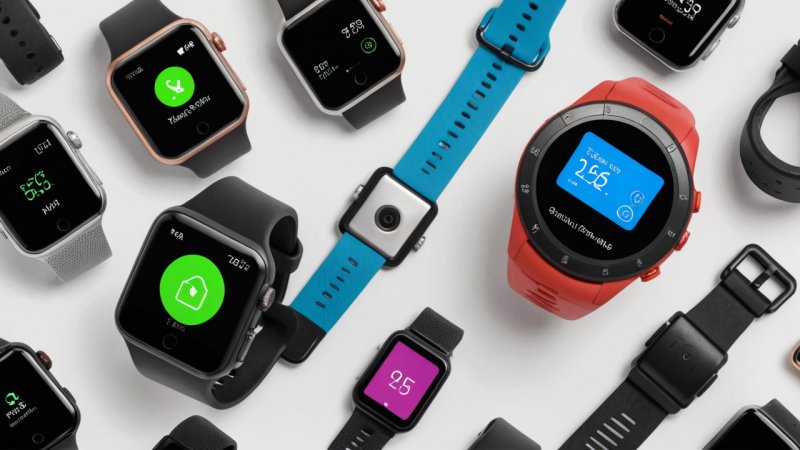As technology continues to evolve, smart wearable devices have become an integral part of our daily lives. From fitness trackers to smartwatches, these devices collect vast amounts of personal data, which raises significant concerns about privacy and security. Cybersecurity for smart wearable devices is a pressing issue that requires a comprehensive understanding of the potential risks and the solutions available to mitigate them. This article delves into the challenges that these devices face, examines potential vulnerabilities, and explores effective strategies to enhance cybersecurity in the wearable tech sector.
The Rise of Smart Wearable Devices
Smart wearable devices have surged in popularity over the past decade. With the ability to monitor health metrics, track physical activity, and connect seamlessly to the internet, these gadgets offer convenience and functionality. According to recent statistics, the global market for wearable devices is projected to reach over $100 billion by 2025. This rapid growth is fueled by advancements in technology, increasing consumer demand for health tracking, and the proliferation of Internet of Things (IoT) devices.
Types of Smart Wearable Devices
- Fitness Trackers: Devices like Fitbit and Garmin monitor physical activities, heart rate, and sleep patterns.
- Smartwatches: Apple Watch and Samsung Galaxy Watch offer functionalities beyond fitness tracking, including notifications and apps.
- Smart Glasses: Devices like Google Glass provide augmented reality experiences and hands-free access to information.
- Health Monitors: Wearables that track specific health metrics, such as glucose levels or ECG readings, often aimed at patients with chronic conditions.
Challenges in Cybersecurity for Wearable Devices
While the benefits of smart wearables are undeniable, they come with a unique set of cybersecurity challenges. Understanding these vulnerabilities is crucial for both manufacturers and users.
Data Privacy Concerns
Smart wearables collect sensitive personal information, including health data, location, and biometric information. This data can be exploited if it falls into the wrong hands. A breach of personal health information can have serious consequences, including identity theft and discrimination. Moreover, many users are unaware of how their data is stored, shared, and used by third parties, leading to a lack of trust in these devices.
Insecure Communication Protocols
Wearable devices often rely on wireless communication protocols such as Bluetooth and Wi-Fi to sync data with smartphones or cloud services. If these protocols are not adequately secured, attackers can intercept the data being transmitted. For example, vulnerabilities in Bluetooth have allowed hackers to access sensitive information from connected devices.
Weak Authentication Mechanisms
Many smart wearables lack robust authentication methods, making them easy targets for cybercriminals. Simple PIN codes or lack of password protection can lead to unauthorized access. Without strong authentication, personal data and device functionalities can be compromised.
Limited Processing Power
Smart wearables are designed to be lightweight and portable, often at the expense of processing power. This limitation can hinder the implementation of advanced security measures, leaving devices vulnerable to attacks. Developers must find a balance between functionality and security.
Solutions for Enhancing Cybersecurity in Wearable Devices
To address the cybersecurity challenges posed by smart wearables, a multi-faceted approach is necessary. Both manufacturers and users play a vital role in ensuring device security.
Robust Encryption Standards
Implementing strong encryption protocols for data transmission and storage is essential. End-to-end encryption can safeguard data as it travels between the wearable device and its connected services. For instance, using AES (Advanced Encryption Standard) can help protect sensitive information from eavesdropping.
Improved Authentication Methods
Developers should prioritize implementing multi-factor authentication (MFA) to enhance security. This could include biometric authentication, such as fingerprint or facial recognition, in addition to traditional passwords. Users should also be encouraged to enable additional security features when available.
Regular Software Updates
Manufacturers must commit to providing regular software updates to address security vulnerabilities. Users should be encouraged to keep their devices updated to benefit from the latest security patches. This proactive approach can significantly reduce the risk of exploitation.
User Education and Awareness
Users must be educated on the importance of cybersecurity practices. This includes understanding privacy settings, recognizing phishing attempts, and knowing how to secure their devices. Awareness campaigns can help empower users to take control of their data security.
Case Studies of Cybersecurity Incidents Involving Wearable Devices
Understanding real-world incidents can provide valuable insights into the cybersecurity landscape of wearable devices.
Case Study 1: Fitbit Data Breach
In 2018, Fitbit faced scrutiny after a breach exposed user data, including health metrics and personal information. The incident highlighted the need for improved data protection measures and led to stronger regulatory scrutiny in the wearable industry.
Case Study 2: Smartwatch Hacking
A research team demonstrated the vulnerabilities in certain smartwatches by hacking into the devices and accessing sensitive data. This incident underscored the importance of secure communication protocols and the need for manufacturers to prioritize security in their design processes.
The Future of Cybersecurity in Wearable Technology
As the wearable technology market continues to grow, the importance of cybersecurity will only increase. Future advancements may include the integration of artificial intelligence (AI) to detect anomalies and potential threats in real-time. Additionally, regulatory frameworks may evolve to enforce stricter security measures in the development and deployment of wearable devices.
Conclusion
Cybersecurity for smart wearable devices is a critical concern that must be addressed to ensure user safety and trust. By understanding the challenges and implementing effective solutions, manufacturers and users can work together to create a more secure environment for wearable technology. As the landscape of technology continues to evolve, ongoing vigilance and innovation in cybersecurity practices will be essential to protect personal data and maintain the integrity of smart wearables.






